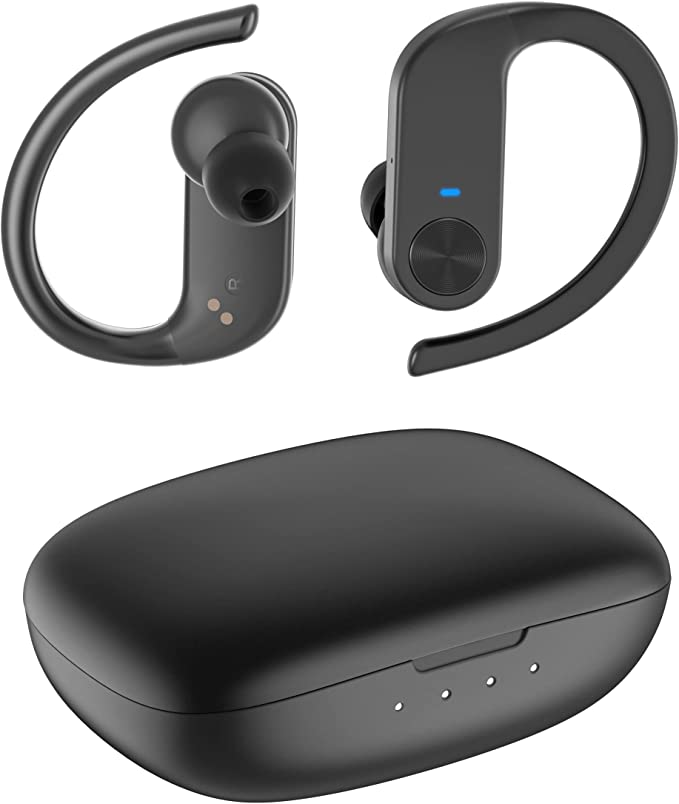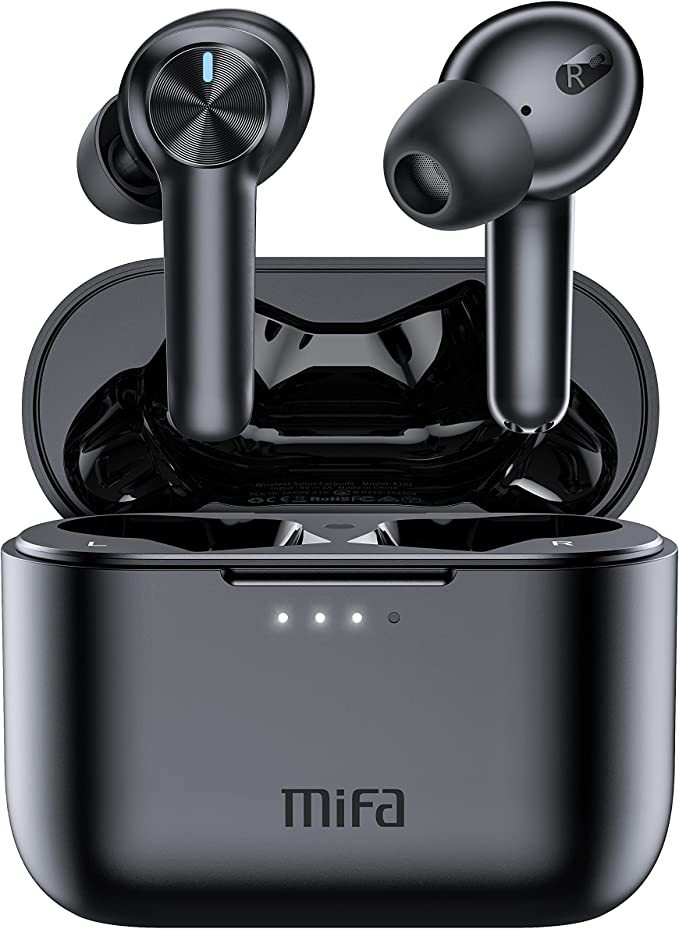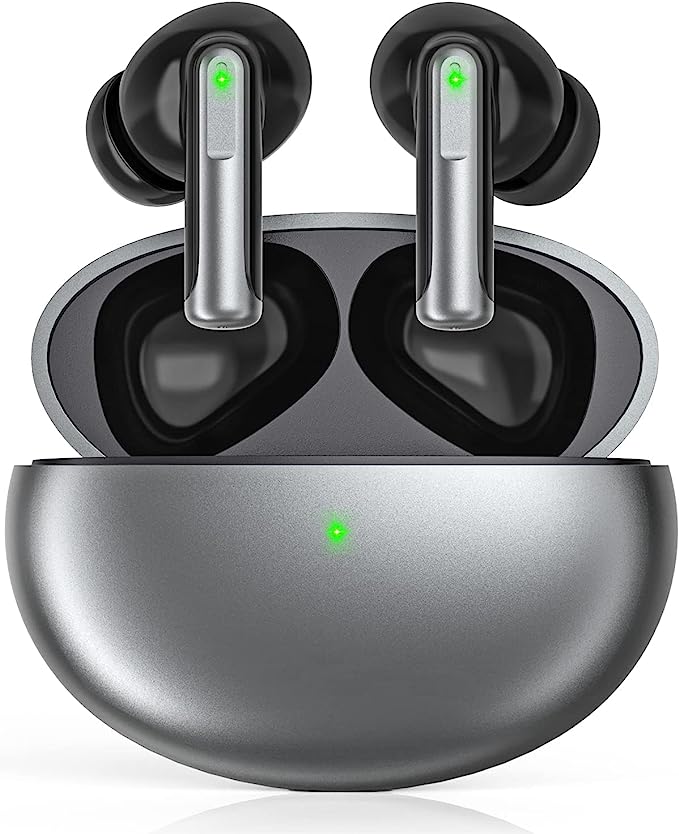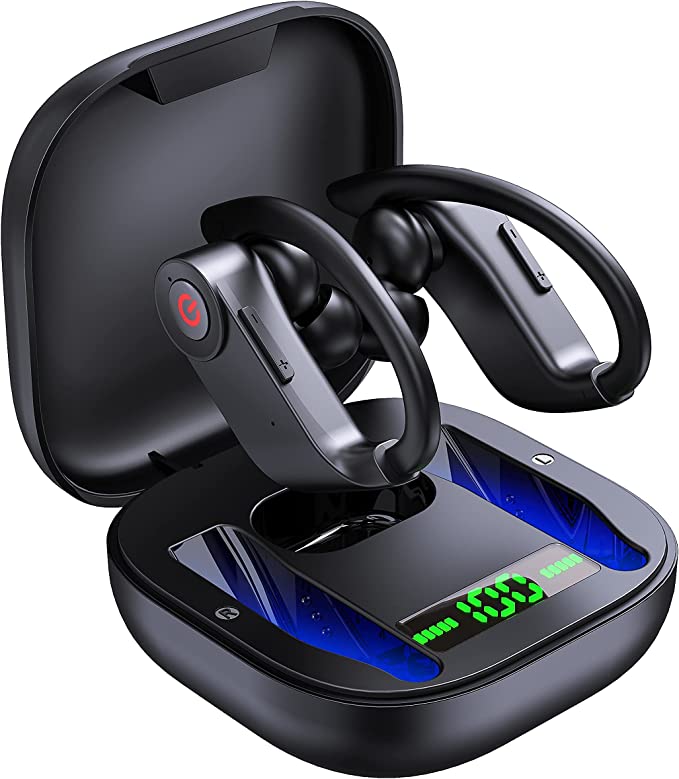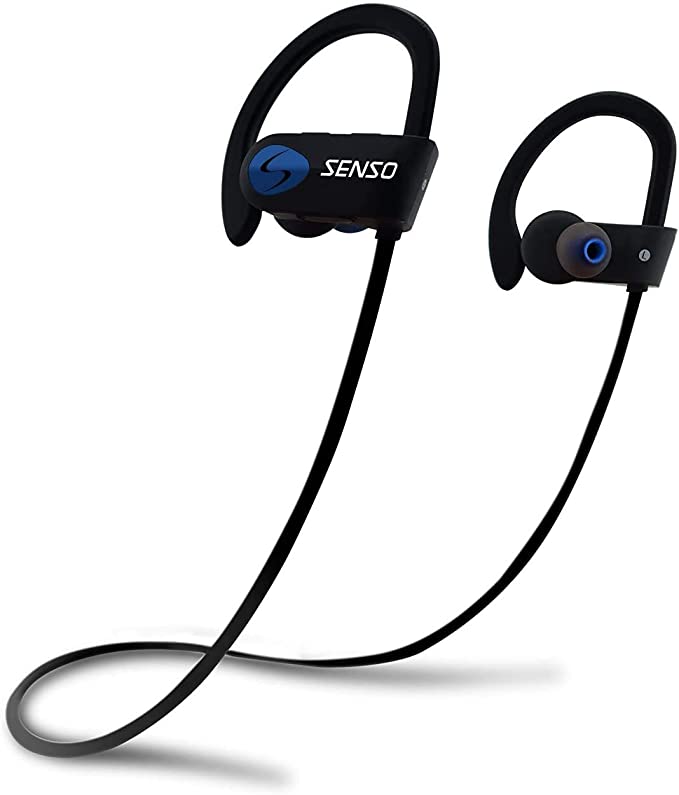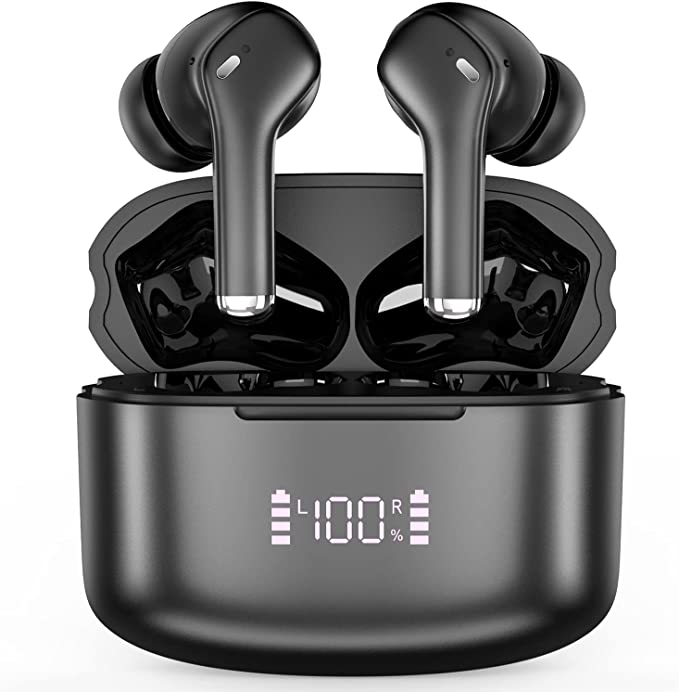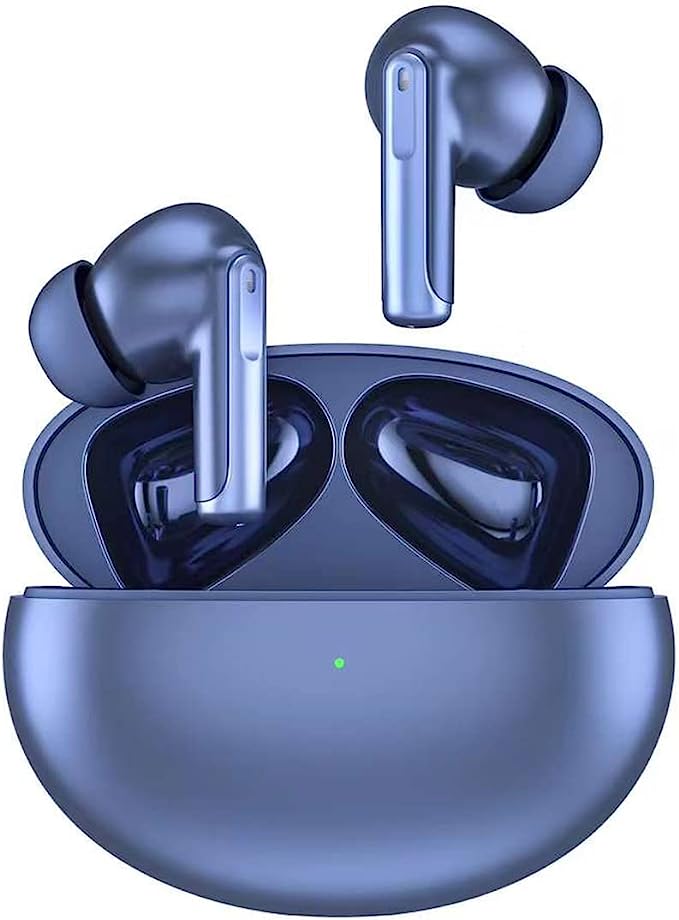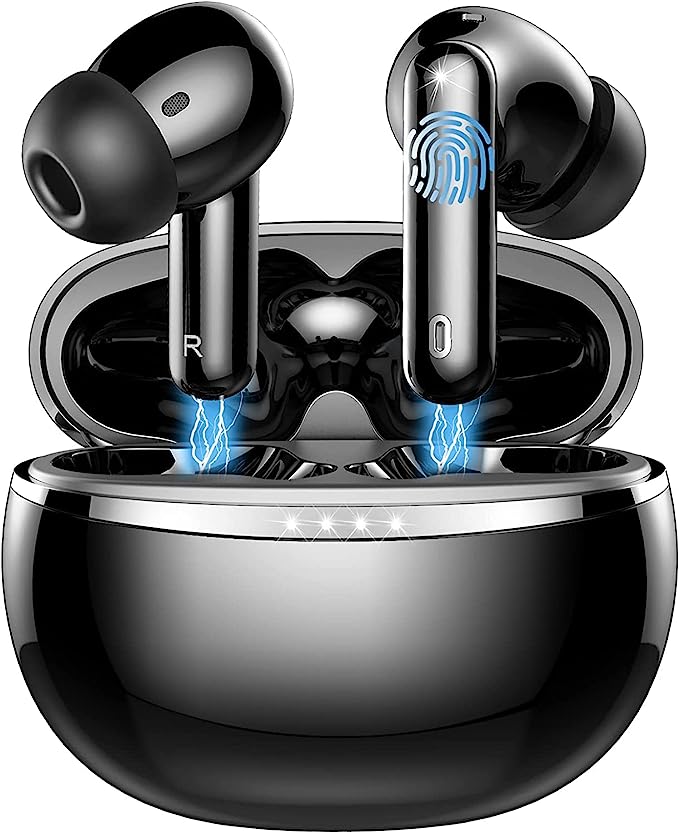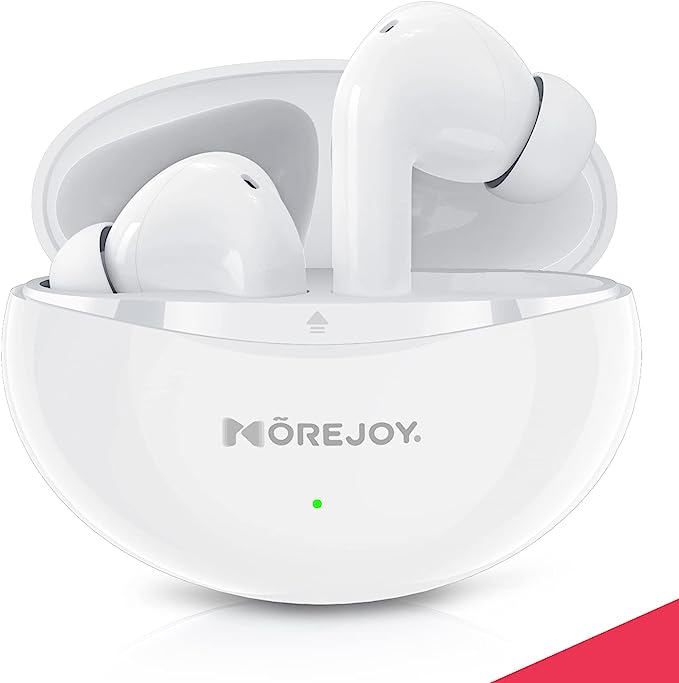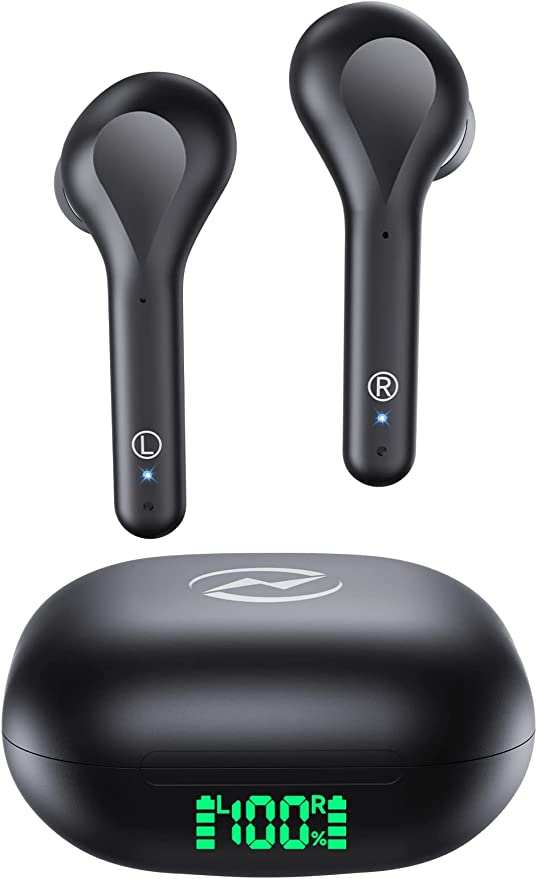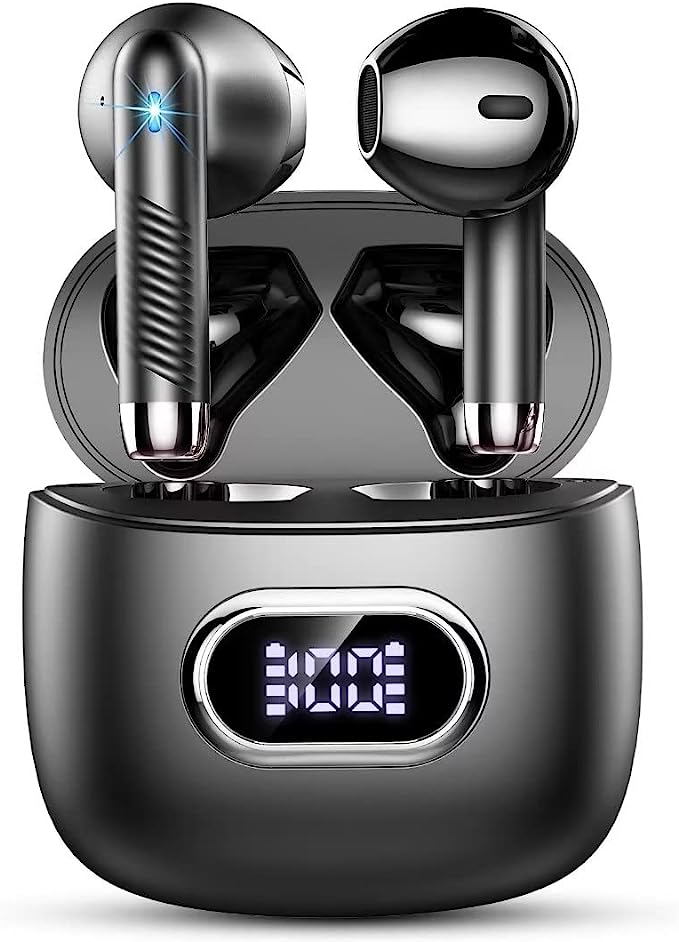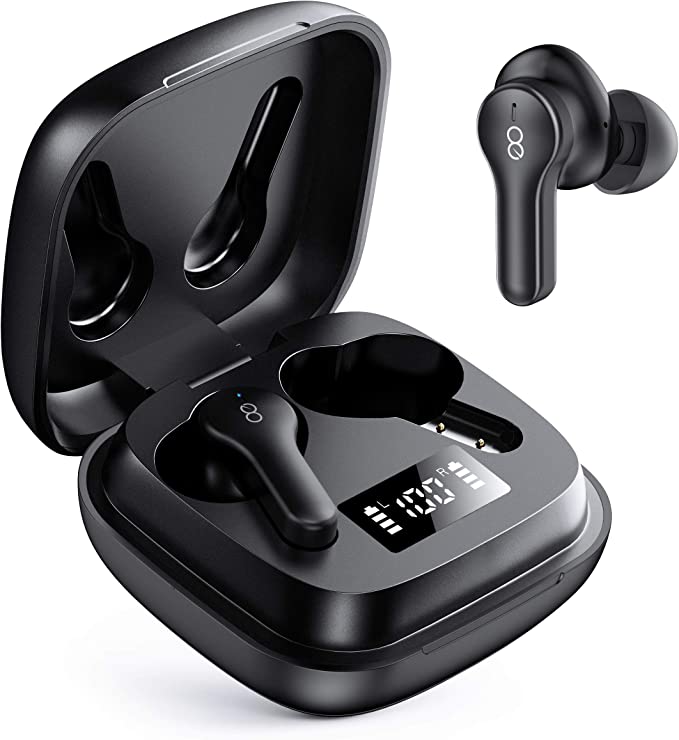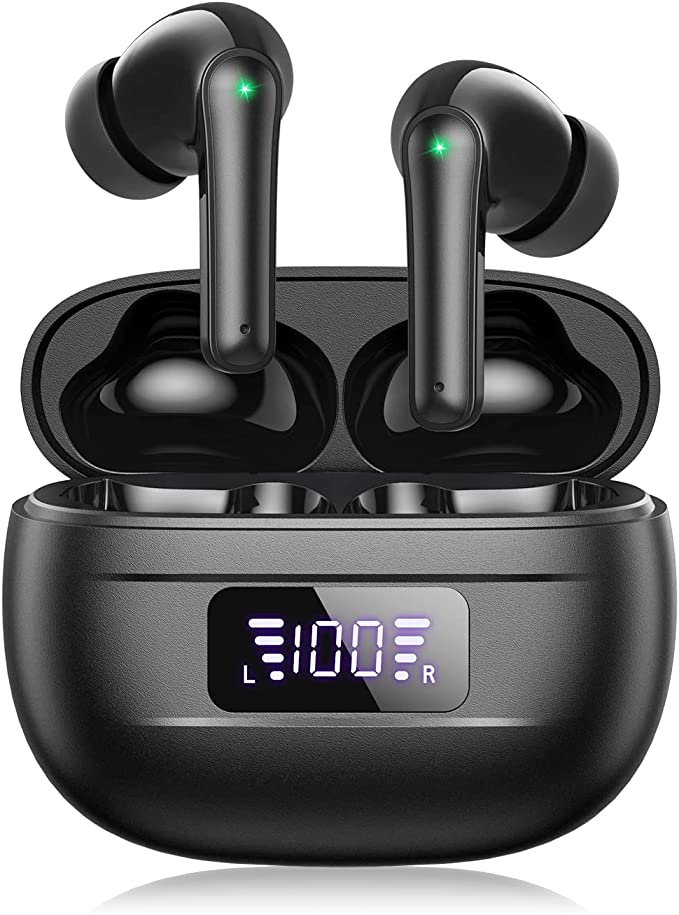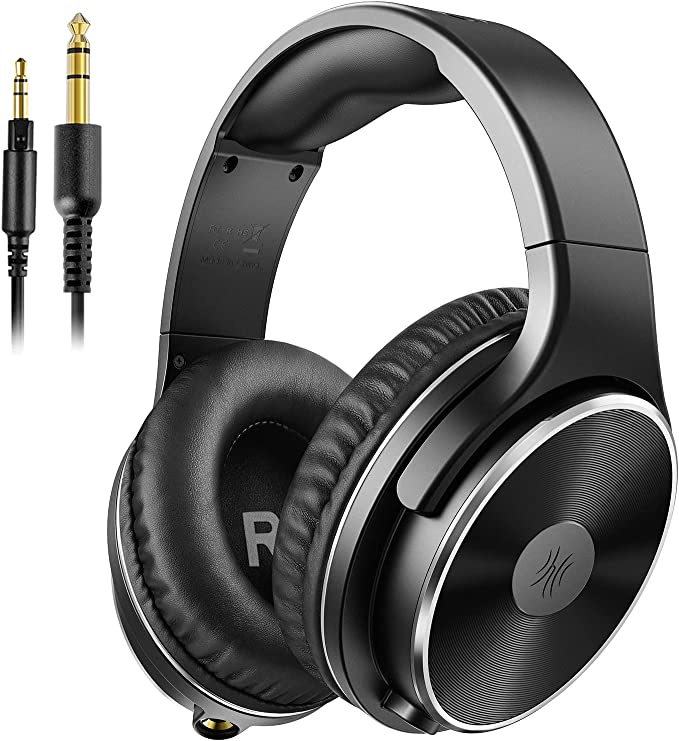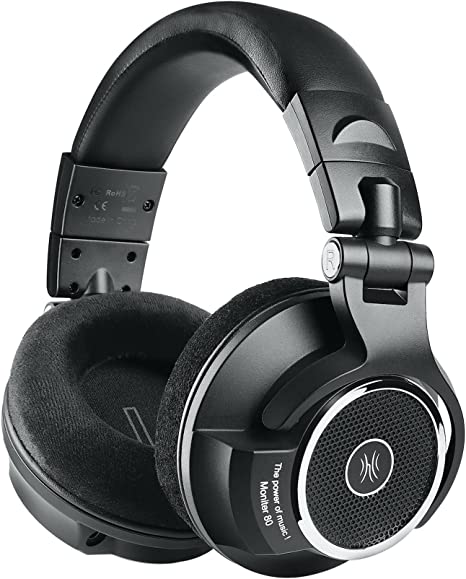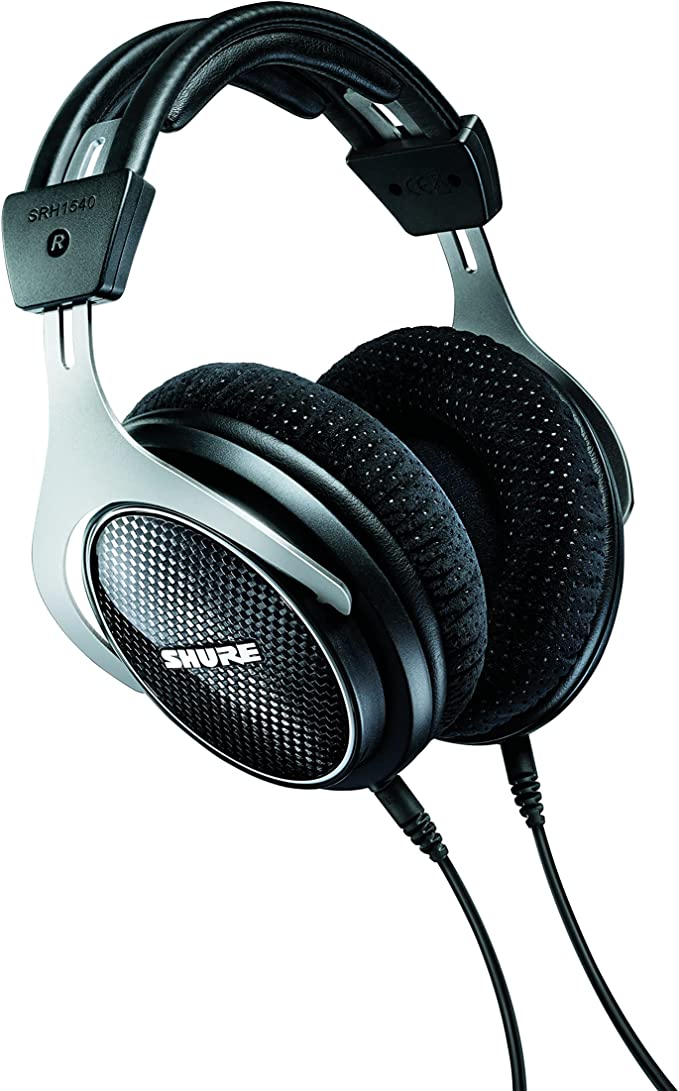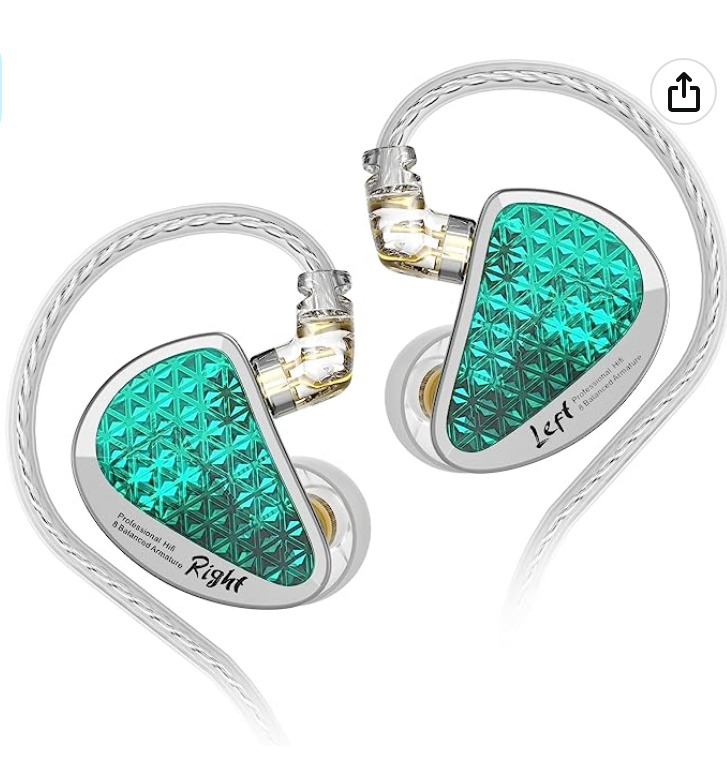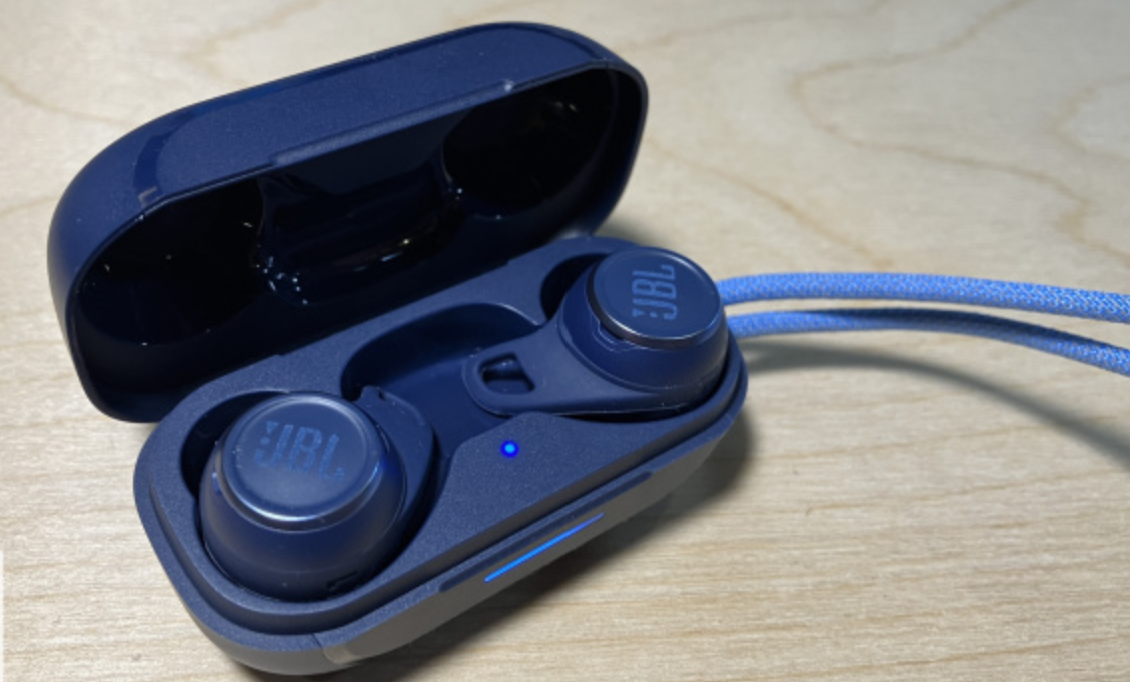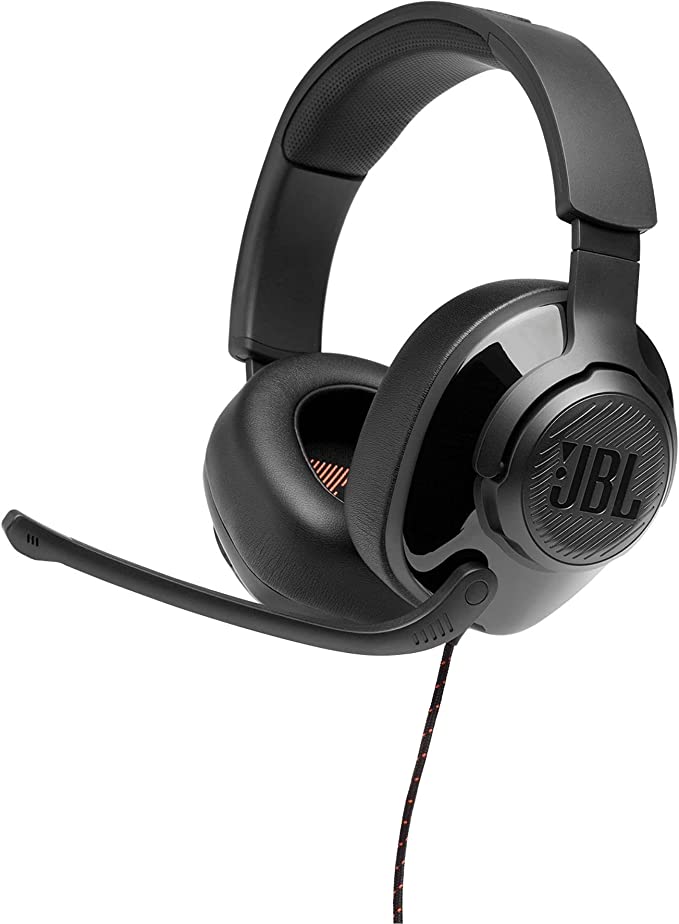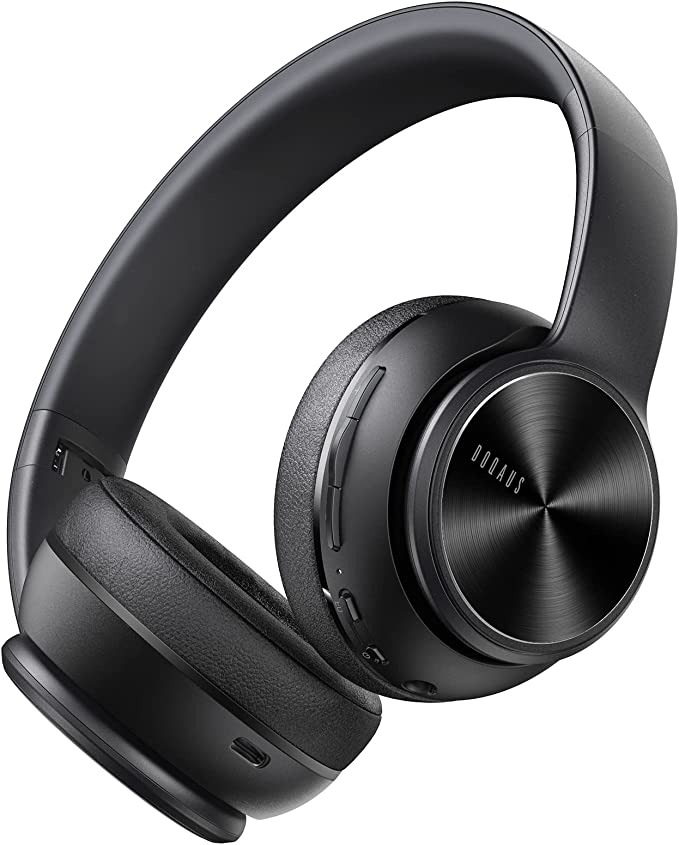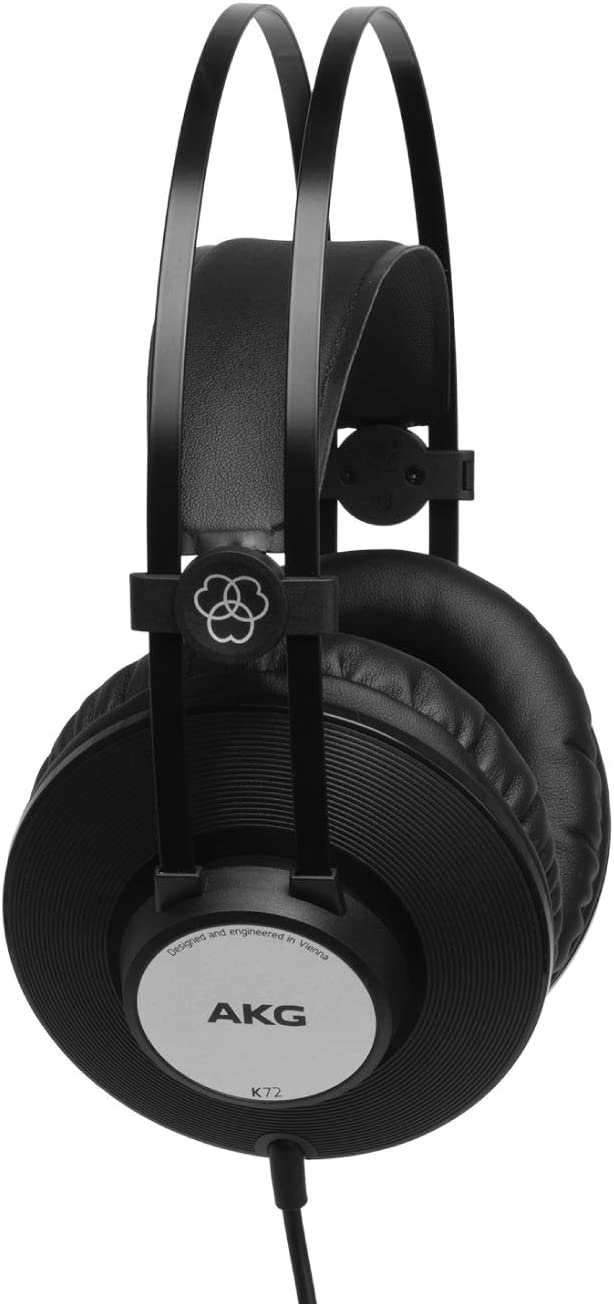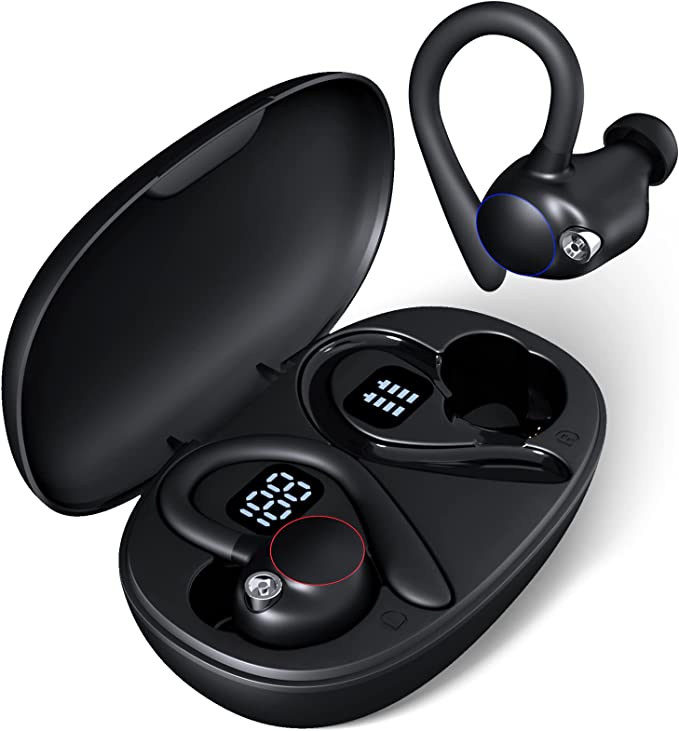TOZO T9 True Wireless Earbuds – Crystal Clear Calls, Deep Bass, IPX7 Waterproof
Update on June 29, 2025, 8:09 a.m.
The Unbelievable Engineering Inside a $30 Earbud: A Deep Dive into the TOZO T9
It’s a story that sounds like a tall tale. A user on Amazon, a bricklayer named Bhop, recounts a normal day at work that took a turn for the absurd. His right TOZO T9 earbud fell to the ground and was promptly run over by a forklift. The expected outcome? A small pile of crushed plastic and electronics. The actual outcome? A slightly cracked but fully functional earbud—touch controls, charging, and all.
This isn’t just a testament to luck. It’s a riddle. How can a pair of true wireless earbuds, often found for under $30, not only survive such a trial but also boast a feature list that seems to belong to its pricier cousins—environmental noise cancellation, IPX7 waterproofing, and wireless charging? This isn’t a product review. It’s an engineering investigation. Let’s put on our safety glasses, grab a metaphorical screwdriver, and uncover the science that makes a budget-friendly “miracle” like the TOZO T9 possible.

The Invisible Armor: More Than Just a Tight Seal
When we see an IPX7 waterproof rating, our minds often jump to images of tight rubber gaskets and perfectly sealed casings. While those play a part, they are often just the first line of defense. The real secret to surviving a dunk in water—or a sweaty workout, or a run in the rain—often lies deeper inside. According to the International Electrotechnical Commission (IEC) standard 60529, IPX7 certification means a device can withstand being submerged in up to one meter of still freshwater for 30 minutes.
To achieve this reliably in an affordable product, many engineers turn to a remarkable bit of material science: hydrophobic nano-coating. Imagine giving the delicate internal circuit board its own invisible, microscopic raincoat. This ultra-thin polymer layer is applied directly to the electronics. Its chemistry is designed to repel water molecules, causing them to bead up and roll off rather than spreading out and creating a deadly short circuit. This internal-first approach to protection is a philosophy of ruggedness. It anticipates failure—that water might get past the outer shell—and prepares for it. It’s a clue to how that forklift-assaulted earbud might have survived; its durability comes from a deeper, more fundamental resilience built into its core.

The Cone of Silence for Your Voice
“Can you hear me now?” It’s the frustrated chorus of the modern age. Many earbuds struggle to separate your voice from the cacophony of a busy street or a bustling café. The TOZO T9 employs Environmental Noise Cancellation (ENC) to tackle this, and it’s crucial to understand that ENC is not for you—it’s for the person on the other end of the call.
It isn’t magic; it’s clever acoustic engineering. The system uses its four-microphone array to perform a process called beamforming. Think of it as creating a “spotlight of sound.” Two microphones are aimed to “listen” for your voice, while the other two are aimed to capture the ambient noise around you. A Digital Signal Processor (DSP)—the earbud’s tiny brain—then runs a complex algorithm. It analyzes both sets of signals, identifies the consistent, non-human background noise, and digitally subtracts it from the signal that contains your voice. The result is that your voice is passed through, clean and isolated, while the surrounding chaos is significantly muffled. It’s like having a team of tiny audio bouncers who ensure only your voice gets into the VIP section of the phone call.

The Unsung Hero of Good Sound You’ve Been Ignoring
Now, let’s talk about what might be the single most important—and most overlooked—component that came in the T9’s box: the six pairs of silicone eartips. We often toss them aside, find a pair that feels okay, and forget about them. But from a physics standpoint, these humble pieces of silicone are paramount to good sound.
The key is achieving a perfect acoustic seal. When an eartip fits snugly in your ear canal, it does two critical things. First, it creates a physical barrier that blocks out external high-frequency sounds, a phenomenon known as passive noise isolation. It’s the reason why even with no music playing, properly fitted earbuds can make the world seem quieter.
Second, and more importantly for audio quality, that seal creates a small, closed chamber of air between the earbud’s 8mm speaker driver and your eardrum. For you to perceive deep, rich bass, the driver needs to be able to efficiently move that air, creating pressure waves. Without a proper seal, it’s like trying to inflate a tire with a massive leak; the bass energy simply dissipates and the sound becomes thin and tinny. As user “Curmudgeon” wisely noted in his review, finding the right tip size was the key to transforming the sound from “tinney” to “fuller.” Before you ever touch an app’s equalizer, getting the physical fit right is the first and most vital step to unlocking an earbud’s true potential.

Let’s Talk About Bluetooth: The Version Number Game
This is where our investigation hits a fascinating snag, a discrepancy that’s actually a perfect learning moment. The product page advertises Bluetooth 5.3, while some users, backed by the user manual, report it as Bluetooth 5.0. So, what’s the truth, and how much does it even matter?
Let’s be direct: for the primary functions of listening to music and making calls, the difference is likely negligible for most users. The real functionality of a Bluetooth device is less about the version number and more about the Profiles it supports. Think of Profiles as the software that tells the hardware what to do. The T9 supports the non-negotiable ones: * A2DP (Advanced Audio Distribution Profile): The driver’s license for streaming stereo audio. * HFP (Hands-Free Profile): What lets you answer a call with a tap. * AVRCP (Audio/Video Remote Control Profile): The reason you can skip a track without pulling out your phone.
An analogy might help: The Bluetooth version (5.0 vs 5.3) is like a car’s model year. A 2023 model might have a slightly more efficient engine than a 2022 model. But the Profiles are the core features—does it have air conditioning, power windows, and a radio? For your daily commute, those features are what define your experience. As long as the essential profiles are present, both Bluetooth 5.0 and 5.3 provide a robust, reliable connection for everyday audio.

The Art of Being Smart, Not Expensive
As we assemble the pieces of our investigation, a clear picture emerges. The TOZO T9 isn’t a miracle product built with alien technology or priceless materials. Its remarkable performance-to-price ratio is a masterclass in value engineering.

This isn’t about cutting corners. It’s about making intelligent choices. Instead of using a single, cutting-edge, and expensive chip to do everything, it leverages a combination of mature, cost-effective, and reliable technologies. It uses proven DSP algorithms for its ENC, standard nano-coating for waterproofing, and a solid Bluetooth foundation for connectivity. The focus is obsessively placed on the features that deliver the most tangible value to the user: surviving a mishap, ensuring a clear conversation, and providing a solid audio foundation that can be perfected with a proper fit.

The story of the forklift is the ultimate metaphor. The earbud didn’t survive because it was made of indestructible material. It survived because its design was smart, protecting its vital internal components with a resilient, internal-first philosophy. True innovation isn’t always the loudest, most expensive new thing. Sometimes, it’s the quiet, considerate engineering that makes great experiences available to everyone. And that is a marvel of science all on its own.
